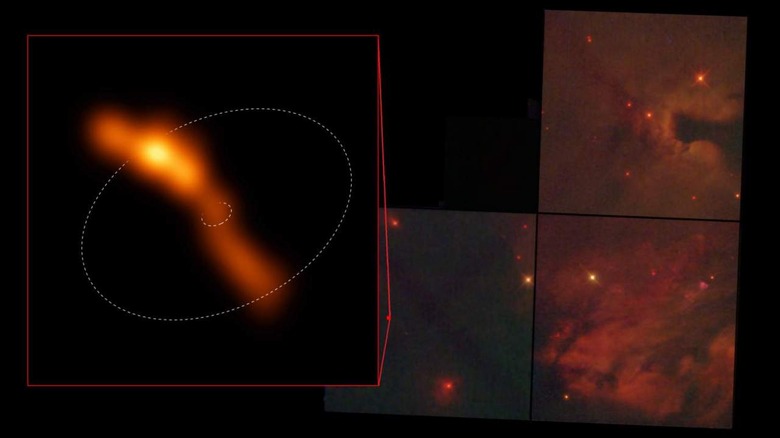Astronomers Note A Significant Difference In Material Ejected From A Massive Protostar
Astronomers are always studying young stars and other objects in the universe to learn more about star formation and science in general. A group studying a fast-moving jet of material being ejected by a massive still-forming star has found a significant difference between that jet and jets of material ejected by less-massive young stars. The astronomers made the discovery using the Karl G. Jansky Very Large Array.
The telescope allowed astronomers to make the most detailed image yet of the inner region of the jet of material coming from a massive young star. Low and high-mass young stars, known as proto-stars, propel jets of material outward perpendicular to a disk of material closely orbiting the star. With a star that has a similar mass as the Sun, jets of ejected material are focused relatively tightly near to the star via a process known as collimation.
Most high-mass protostars are more distant, and studying regions of those stars up close is more difficult, leaving scientists unsure if the same process occurred in higher mass stars. The high-mass protostar studied by the astronomers is called Cep A HW2, and it's about 2300 light-years from Earth in the constellation Cepheus. When its development is complete, Cep A HW2 is expected to develop into a star about ten times more massive than the Sun.

Using the VLA, astronomers were able to gather images showing the finest detail ever seen in an object of this type allowing astronomers to view the innermost portion of the jet. The portion the team viewed was roughly as long as the diameter of the solar system. The team says they saw something very different from what is usually seen in jets of material emanating from low-massive stars.
Observations conducted of lower-mass protostars show the jets are collimated as close to the star is only a few times the Earth-Sun distance. In Cep A HW2, the team observed not a single jet but two different things. The team saw a wide-angle wind originating close to the star and a highly-collimated jet some distance away. The collimated jet from the massive star begins at a distance from the star comparable to the distance of the Sun to Uranus or Neptune.
The team says two things could be at play. The first is while the same mechanism can be at work in high-mass or low-mass protostars, the star's mass could determine collimation distance. The second possibility is that high-mass stars might produce only the wide-angle wind observed in Cep A HW2, resulting in collimation only when physical conditions around the star restrict the jet's flow.
